In modern electricity and communication systems, Optical fiber cables play a crucial role. As two current types of air cables, the OPGW (Composite optical earth cable) and the adss (Fully dielectric self-providing fiber cable) each have a different structure and applications. SO, What are exactly the differences between the OPGW and ADSS cables ?
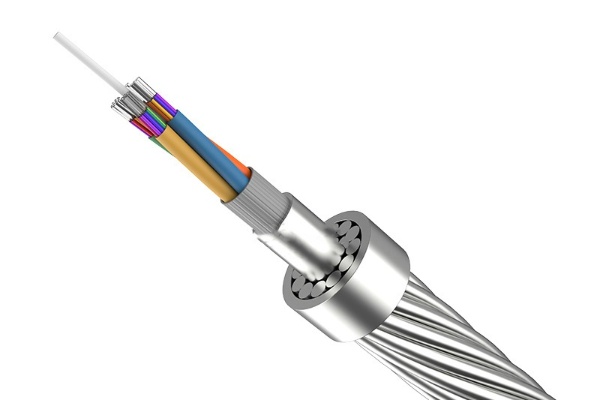
Presentation of the OPGW cable
Definition and structure
The OPGW cable (Optical Ground Wire) is a composite cable that incorporates optical fiber and protection communication functions in lightning systems. It is generally installed at the top of the high voltage transmission lines. It is made up of optical fibers and metal conductors ; The metal part is not only used for lightning protection, But also provides the mechanical resistance necessary to support the clean weight of the cable as well as the external loads.
Application scenarios
OPGW cable is mainly used in the fields of electricity transmission and communication, especially on high voltage transmission lines. Here are some typical examples of application of the OPGW cable :
High and very high voltage transmission lines
The OPGW cable is generally installed at the top of the lines of High and very high voltage transmission. Its metal part offers excellent protection against lightning, while internal optical fibers are used for data communication. This combination makes it possible to transmit both electricity and data on the transmission lines.
Transmission lines requiring integration protection against lightning and communication
The metal envelope of the OPGW cable has excellent land protection properties, This makes it an ideal choice for areas where strengthened protection against lightning is necessary (like areas frequently struck by lightning). At the same time, Its internal optical fibers provide a rapid and reliable communication link for data transmission and monitoring.
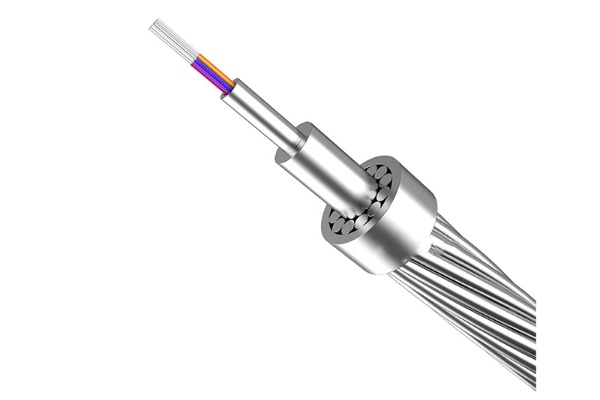
Long distance transmission lines
Thanks to its robust structure, The OPGW cable is suitable for long distance transmission lines. In these cases, OPGW optical fiber cable Can not only support the mechanical load of the transmission lines, but also offer a stable communication function.
Transmission lines under difficult environmental conditions
OPGW cable has excellent corrosion resistance, which makes it suitable for areas with high pollution, with salt or coastal fog, where environmental conditions are difficult. Its design with metallic armor allows it to resist the corrosion of these environments on materials, guaranteeing long -term stable operation.
Electrical communication systems requiring high reliability
The OPGW cable, Installed at the top of the electric pylons and far from the ground, is rarely subject to damage caused by humans or nature, which improves the reliability of its communication system. It is therefore suitable for electrical communication systems where the stability of communication is crucial, such as distribution control systems and remote monitoring systems.
Electric line modernization and upgrade projects
During modernization or upgrading of power lines, The OPGW cable can replace the existing guard wire (Lightning protection driver), thus offering improved protection against lightning and a new fiber optic communication function. This approach can reduce modernization costs and improve the overall functions of the line.
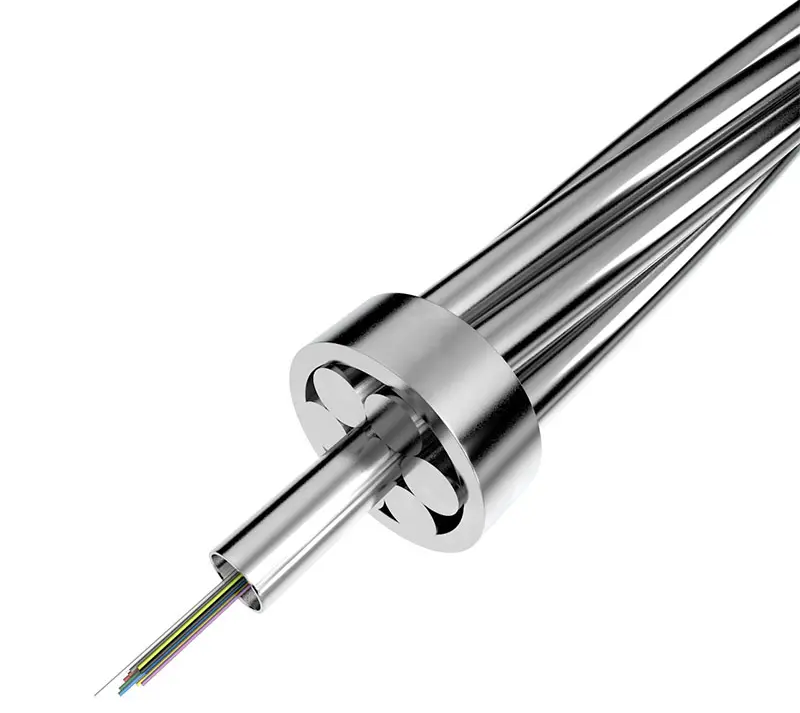
In summary, The OPGW cable is widely used in high and very high voltage electricity transmission systems, providing both lightning protection and stable communication. It is particularly suitable for long distance electric lines requiring high reliability. Thanks to its metal structure, He can also bear strong mechanical constraints, which makes it adapted to difficult environmental conditions such as snow -capped regions and areas of strong winds.
Benefits
The OPGW cable is multifunctional, Because it can ensure both optical fiber communication and protection against lightning of power lines. What's more, thanks to its metal structure, It has high resistance and good corrosion resistance, which makes it suitable for difficult environments and gives it a long lifespan, generally more than 30 ans.
Disadvantages
Since it must be integrated into the transmission lines, The installation of the OPGW cable generally requires a power cut, which poses a challenge for the continuous operation of the electrical system. What's more, Its installation cost is relatively high, And it is quite heavy, requiring more robust support structures.
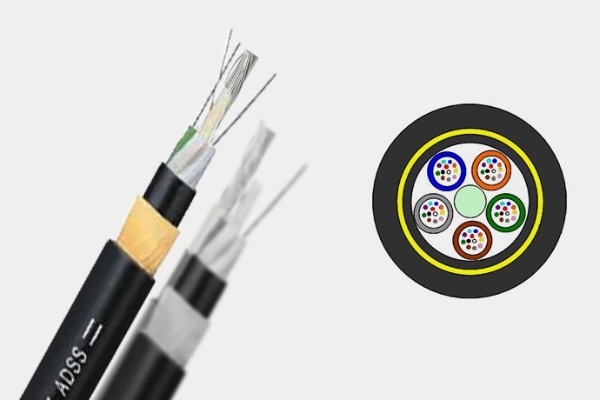
ADSS CABLE Presentation
Definition and structure
ADSS cable (All-Dielectric Self-Supporting) is a fully dielectric cable, which means that it does not contain any metal component in its structure. It is made up of optical fibers wrapped by several layers of protective materials, generally using high -resistance materials such as aramid fibers to provide the necessary mechanical resistance.
Application scenarios
ADSS cable application scenarios include mainly :
Electric lines of different tension levels
The ADSS cable can be installed on high -voltage bass power lines. Due to its entirely dielectric structure without metal, He is not affected by electric and magnetic fields.
Lines where it is impossible to cut the diet
It is adapted to the transmission lines where a power cut is not possible, Because it can be installed and maintained without interruption of service.
Environments with high electromagnetic interference
In the absence of metal components, adss is not affected by electromagnetic interference, which makes it suitable for use in environments with high electromagnetic interference, such as near high voltage transmission pylons.
Installation in difficult weather conditions
In areas with high loads of wind or abundant snow, The lightness of the ADSS cable allows it to better resist difficult weather conditions without suffering from damage.
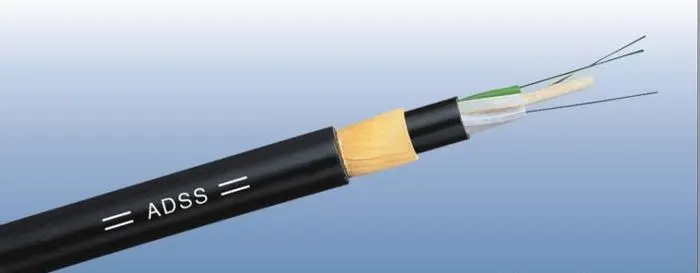
Long distance lines with strong communication requirements
The ADSS cable offers a large -band communication capacity and with low loss, which makes it suitable for long distance electric lines requiring high quality communication.
In summary, The ADSS cable is suitable for power lines of different voltage levels, especially on the lines where a power cut is not possible. Thanks to its entirely dielectric nature, The ADSS cable is not affected by electromagnetic interference, which makes it ideal for installation near high voltage power lines, while maintaining good communication performance. The ADSS cable is widely used in electrical communication scenarios requiring high reliability, Easy installation and resistance to electromagnetic interference.
Benefits
The main advantage of the ADSS cable lies in its ease of installation. Since it does not contain metal, It can be installed directly under tension, thus reducing the impact on the supply of electricity during the work. What's more, it is light, not requiring particularly robust support structures, has a strong resistance to electromagnetic interference and requires little maintenance.
Disadvantages
The mechanical resistance of the ADSS cable is mainly based on non -metallic materials. Therefore, It may require additional protective measures in the face of wind and ice loads. What's more, under extreme weather conditions, Its sustainability and stability can be lower than those of the OPGW cable with metal structure.
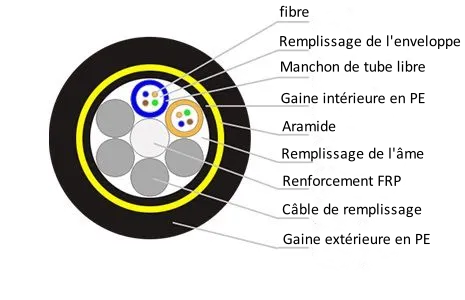
Main differences between OPGW and ADSS cables
Structure and materials
The OPGW cable contains metal components, providing higher mechanical resistance and lightning protection function. On the other hand, The ADSS cable has an entirely dielectric structure without metal and is mainly based on non -metallic high resistance materials for the support.
Installation method
The OPGW cable must generally be installed out of course, which can affect the continuity of the supply of electricity. ADSS cable, as for him, can be installed under tension, offender greater installation flexibility.
Application scenarios
The OPGW cable is better suited to high voltage power lines requiring mechanical resistance and higher lightning protection. The ADSS cable is ideal for power lines where the power stopping is impossible or for environments requiring resistance to electromagnetic interference.
Cost and maintenance
The installation of the OPGW cable is more expensive and its maintenance is relatively complex. ADSS cable, on the other hand, has lower installation and maintenance costs, But may require more protection measures in difficult environments.
Factors to consider when choosing the OPGW and adss cable
When choosing the type of cable, several factors must be taken into account, notably :
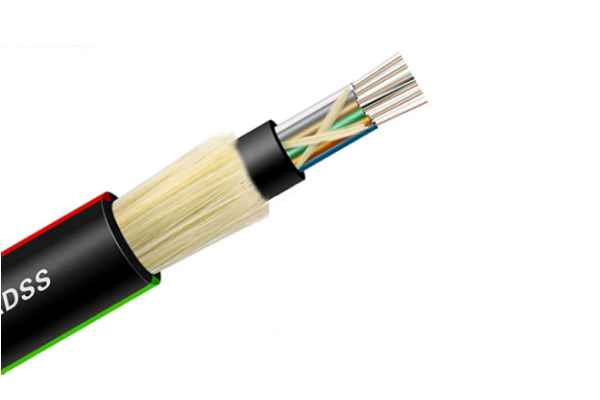
Lines conditions
Different tension levels and environmental conditions (such as wind speed, Ice load, Corrosion, etc.) influence the choice of cable.
Construction conditions
The possibility of working under tension or not, as well as the difficulty and cost of the installation, are also important factors to consider.
Future needs
Taking into account the life of the cable, possible future expansion of lines and the frequency of maintenance, It is essential to choose the most appropriate cable type.
Advantages of ZMS cables
OPGW cables and ADSS offered by ZMS each have the advantages, meeting various application needs :
Advantages of the OPGW cable : OPGW cables produced by ZMS Cable offer high reliability and long life, adapted to difficult environments and high voltage lines.
ADSS cable advantages : ZMS adss cables are easy to install and durable, ideal for environments requiring continuous supply of electricity.
Personalization service : ZMS also offers personalized cable services, allowing to design tailor -made wiring solutions according to the specific needs of customers.
Conclusion
OPGW and ADSS cables each have their own unique structure and their specific application scenarios, adapted to different electricity and communication needs. When choosing the most appropriate cable type, It is essential to consider the conditions of the lines, construction requirements and future needs. ZMS cables offer a range of choices and personalization services, ensuring that customers can find the solution best suited to their needs.
